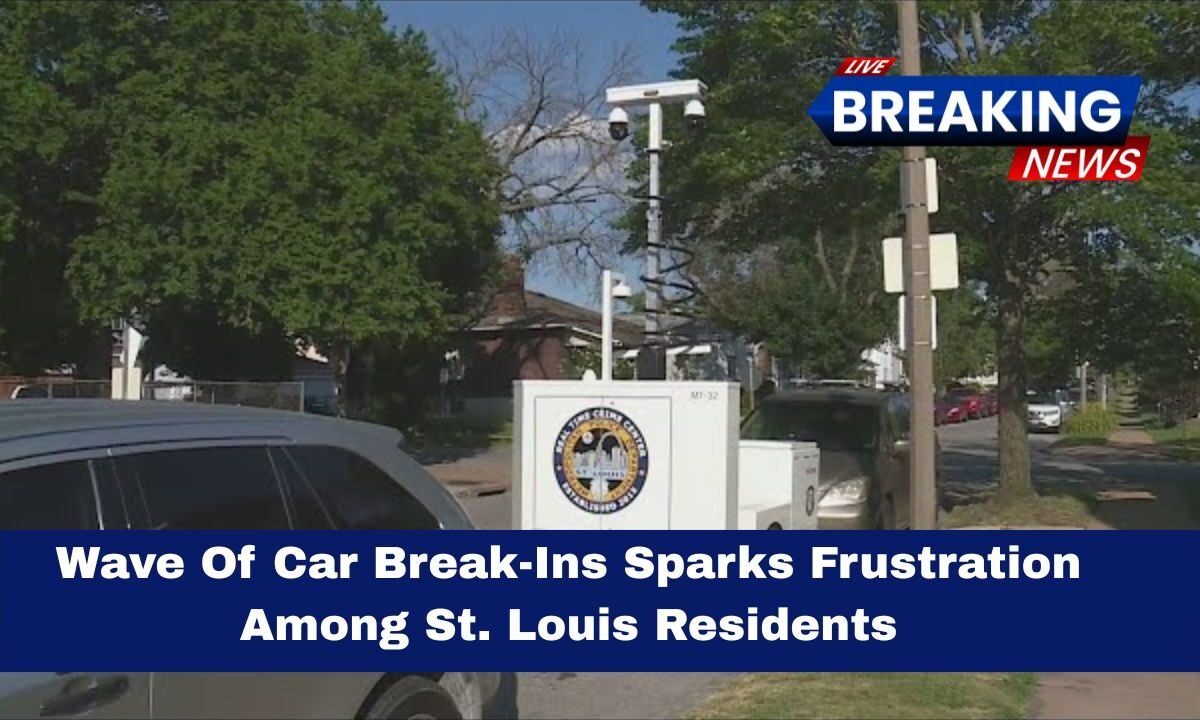A new wave of car break-ins is leaving St. Louis drivers on edge, with residents waking up to shattered windows, rifled glove boxes, and stolen bags or electronics.
Neighborhood groups report clusters of incidents hitting multiple blocks in a single night, especially where parking is dense—near parks, restaurants, and apartment complexes.
While some categories of crime have improved this year, vehicle break-ins continue to appear in sudden bursts, fueled by small crews who move quickly and target easy opportunities.
Where The Hotspots Are
Recent neighborhood chatter and security footage point to activity around Central West End, DeBaliviere Place, parts of south St. Louis, and select pockets in St. Louis County.
Residents describe late-night “window-smash and grab” patterns, with thieves checking door handles for unlocked vehicles and peeking for visible valuables left on the seat or floorboard.
In some cases, neighbors have reported lookouts while others move down the street, hitting multiple cars in minutes.
How Police And City Officials Are Responding
SLMPD has been surging patrols in impacted blocks, leaning on CompStat-style mapping to shift officers to the latest hotspots.
The department encourages quick online or in-person incident reporting so analysts can track patterns block by block.
City leaders, meanwhile, are reminding drivers to remove visible items, use steering-wheel locks if appropriate, and park in well-lit, camera-covered areas whenever possible.
Neighborhood associations have stepped up camera sharing, license-plate captures, and coordinated watch times to support investigations.
Arrests And Ongoing Investigations
Police say arrests are being made when evidence—particularly video, plate details, or distinctive suspect clothing—ties crews to multiple scenes.
Investigators also watch for inter-jurisdiction trends, since groups sometimes strike in both city and county neighborhoods on the same night.
Residents are urged to file reports, even if nothing major was taken, because each incident fills in the pattern for targeted deployments and case building.
Why Break-Ins Persist Despite Other Improvements
Unlike long-term trends, property crime often arrives in spikes. A few high-impact nights can make it feel like the entire city is under siege, even when year-to-date numbers look better.
Thieves typically seek speed over value, choosing unlocked doors and visible bags over complex thefts.
The result: frequent but fast incidents that are hard to intercept without timely reporting, street-level coordination, and predictive patrols.
Key Details At A Glance
| Item | Details |
|---|---|
| Pattern | Short, late-night bursts; multiple vehicles hit block-to-block |
| Targets | Unlocked cars, vehicles with visible bags/electronics |
| Likely Areas | Central West End, DeBaliviere Place, parts of south St. Louis, selective county pockets |
| Tactics | Handle-checking, quick smash-and-grab, occasional lookout |
| Response | CompStat-driven patrols, neighborhood camera sharing, rapid reporting |
| What Helps Most | Remove valuables, lock doors, well-lit parking, dash/doorbell cameras, steering-wheel locks |
Practical Prevention Tips For Drivers
- Remove Everything Visible: Even a small backpack, shopping bag, or charging cable signals there may be valuables inside.
- Lock And Layer: Always lock doors; add steering-wheel locks or alarm stickers to deter fast-moving crews.
- Park Smart: Choose well-lit spots near entrances, cameras, or high-foot-traffic areas.
- Document Quickly: If you’re hit, photograph the scene, save camera clips, and file a report—your case data helps prioritize patrols.
- Coordinate With Neighbors: Share times, plates, and video on your neighborhood channels to help investigators connect dots.
The current wave of car break-ins in St. Louis reflects how small, fast-moving crews can create big neighborhood impacts in a short time.
While enforcement tools and data-driven patrols are helping, residents remain the first line of defense: remove visible items, lock up, park smart, and report every incident.
With timely data, camera evidence, and block-by-block coordination, communities can disrupt patterns and help steer patrols exactly where they’re needed most.




